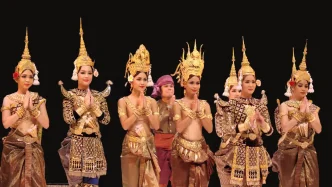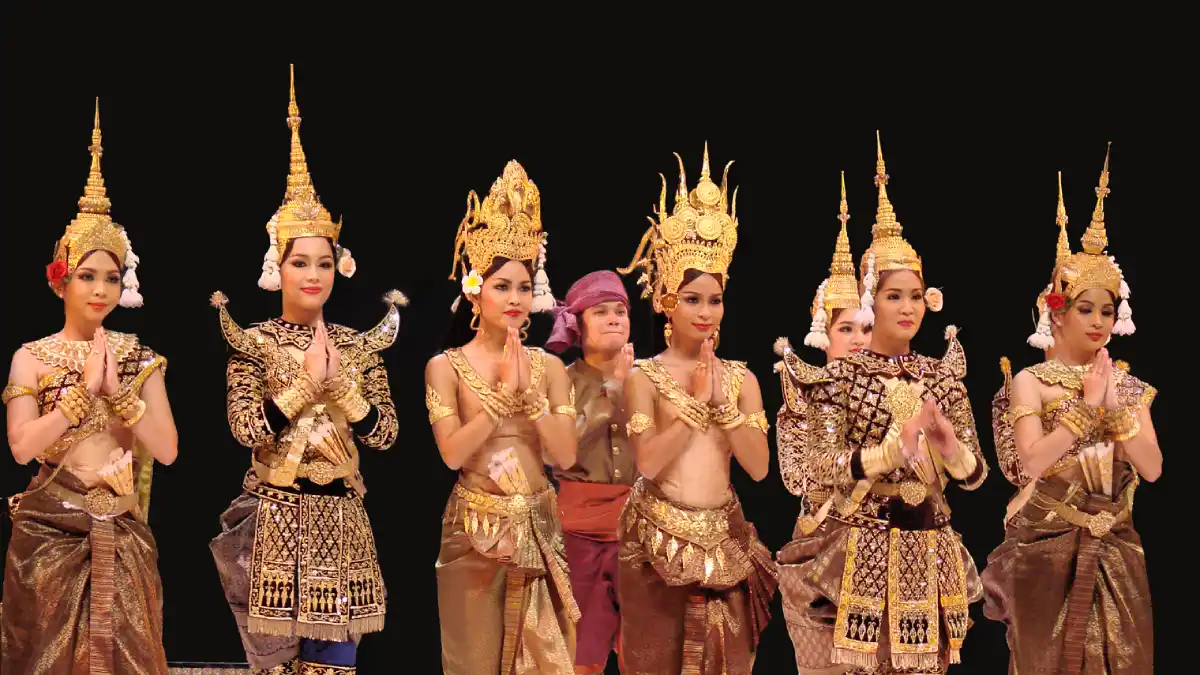A storm of controversy has swept across Thailand as social media platforms buzz with allegations that Cambodia has registered 22 Thai literary works as part of its intangible cultural heritage with UNESCO. The claims, which surfaced online in recent days, suggest that these works—deeply rooted in Thailand’s royal and historical legacy—were listed under Cambodia’s cultural banner without apparent objection from Thai authorities. The issue has sparked a heated debate about cultural ownership, national identity, and the complexities of shared heritage in Southeast Asia.
Origins of the Dispute
The uproar centers on reports that Cambodia submitted a list of literary works, many of which were composed by Thai royalty and poets, to UNESCO as part of its cultural heritage tied to the Cambodian Royal Ballet. Social media posts circulating widely among Thai netizens allege that these works, including revered texts like Ramakien—Thailand’s version of the Ramayana, composed by Kings Rama I and Rama II—were claimed by Cambodia to support its traditional dance performances. Other notable works reportedly included are Krai Thong a royal composition by King Rama II, and Nao, which is a dance drama also attributed to the same monarch.
According to the online claims, Cambodia justified the registration by stating that the works were revived and integrated into royal dance performances between 1979 and 2002. One specific example cited is the folk drama Phra Thong Nang Nak reportedly written in 1930 during the reign of Preah Sisowath, a former King of Cambodia. However, many of the works listed have origins tracing back to Thailand’s Ayutthaya period or later royal compositions, raising questions about how and why they were categorized under Cambodian heritage.
The Thai public’s reaction has been swift and visceral, with many expressing outrage over what they perceive as an appropriation of their cultural legacy. The issue strikes at the heart of national pride, particularly as several of the works are tied to Thailand’s monarchy and historical narrative, including compositions by revered figures like Sunthorn Phu, a celebrated Thai poet.
Official Response and Investigation
In response to the mounting criticism, Thailand’s Ministry of Culture has stepped in to address the situation. Prasop Riang-ngern, Permanent Secretary of the Ministry of Culture, acknowledged the public’s concern and confirmed that the ministry is taking the matter seriously. He stated that he has directed the Department of Cultural Promotion to collaborate with the Fine Arts Department, the Ministry of Foreign Affairs, and other relevant bodies to investigate the claims and establish the facts.
“Due to the complex and sensitive nature of the issue, a thorough and careful review is required” Prasop emphasized, underscoring the need for a measured approach to avoid escalating tensions. The Ministry of Culture has committed to providing updates as soon as a comprehensive understanding of the situation is achieved.
While official statements remain cautious, the lack of immediate clarity has only fueled public frustration. Many Thai citizens are demanding swift action to ensure that their cultural heritage is protected and accurately represented on the global stage.
Cultural Heritage and Regional Dynamics
The controversy highlights the intricate and often contentious nature of cultural heritage in Southeast Asia, where historical narratives, shared traditions, and colonial legacies frequently intersect. Thailand and Cambodia, despite their geographical proximity and shared Buddhist traditions, have a history of cultural and territorial disputes. Past disagreements over landmarks like the Preah Vihear Temple—a UNESCO World Heritage Site claimed by both nations—have periodically strained bilateral relations.
Literary works, in particular, hold profound significance in both countries, often serving as vehicles for national identity and historical memory. Thailand’s Ramakien for instance, is not merely a story but a cornerstone of Thai art, dance, and theater, deeply embedded in the country’s cultural fabric. Similarly, Cambodia’s Royal Ballet, recognized by UNESCO as an Intangible Cultural Heritage of Humanity in 2003, is a vital expression of Khmer identity, often drawing on ancient narratives and folklore.
The overlap in cultural elements between the two nations is not uncommon, given centuries of interaction, migration, and exchange during the Khmer Empire and the Ayutthaya period. However, the question of ownership becomes thorny when such elements are formalized under one nation’s heritage banner, especially through international bodies like UNESCO. If the allegations are substantiated, they could reignite debates over how shared cultural assets are documented and claimed in global contexts.
UNESCO’s Role and Intangible Heritage
UNESCO’s Intangible Cultural Heritage list aims to safeguard traditions, practices, and expressions that communities recognize as part of their cultural identity. Unlike tangible heritage sites, intangible heritage often transcends borders, encompassing oral traditions, performing arts, and social practices that may be shared across regions. The process of listing typically involves a nomination by a state party, followed by evaluation to ensure the submission meets criteria such as community involvement and cultural significance.
In this case, the reported inclusion of Thai literary works under Cambodia’s heritage raises questions about the consultation process and whether Thailand was informed or involved. UNESCO encourages dialogue between nations with shared heritage, but disputes can still arise when communities feel their cultural contributions are overlooked or misrepresented. The organization has not yet issued a public statement on the current controversy, and it remains unclear whether the works in question are officially listed or still under consideration.
For Thailand, the stakes are high. Losing recognition for cultural works tied to national identity could have lasting implications, not only for public sentiment but also for how future generations perceive their heritage. At the same time, Cambodia’s perspective—potentially rooted in the revival and adaptation of these stories within its own cultural practices—must be understood to avoid a one-sided narrative.
Public Sentiment and Social Media’s Role
The rapid spread of this issue through social media underscores the power of digital platforms in shaping public discourse, especially on matters of national pride. Thai users have taken to various online spaces to voice their discontent, with many calling for immediate government intervention. The viral nature of the claims, while amplifying awareness, also risks amplifying misinformation, as unverified details and emotional rhetoric often outpace factual reporting.
While specific posts or hashtags related to this issue could not be independently verified at the time of writing, the scale of online engagement suggests a deep well of concern among Thai citizens. This digital outcry has likely pressured authorities to respond more quickly than they might have otherwise, highlighting how social media can both inform and complicate cultural and political disputes.
Looking Ahead: A Delicate Balance
As Thailand’s Ministry of Culture continues its investigation, the path forward will require careful diplomacy and a commitment to factual accuracy. Engaging with Cambodia directly, as well as through UNESCO, could provide clarity on the status of the literary works and whether there was any misunderstanding in the registration process. Collaborative efforts to document shared heritage—perhaps through joint nominations or mutual recognition—might offer a way to honor the intertwined histories of both nations.
Yet, the emotional weight of this issue cannot be understated. For many Thais, these literary works are not just historical artifacts but living symbols of their cultural identity. Any resolution will need to address public sentiment while fostering dialogue rather than division. The coming weeks will likely reveal whether this dispute can be transformed into an opportunity for greater regional understanding or if it will deepen existing fault lines.
For now, as the facts are pieced together, the question remains: how can nations with shared histories navigate the delicate terrain of cultural heritage in a way that respects both pride and partnership?















